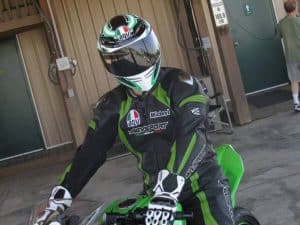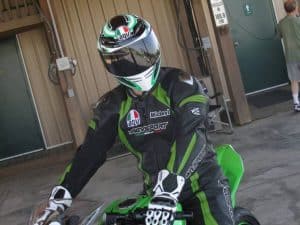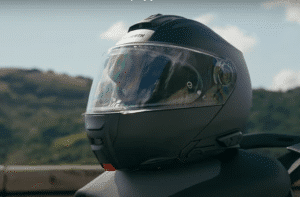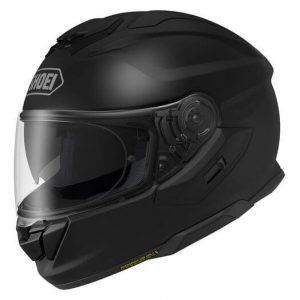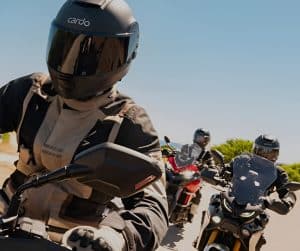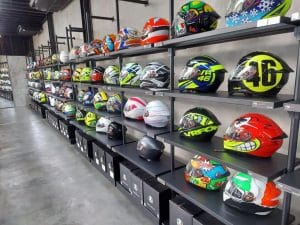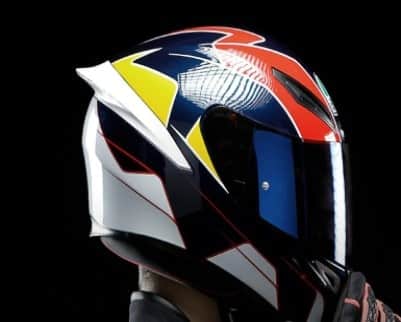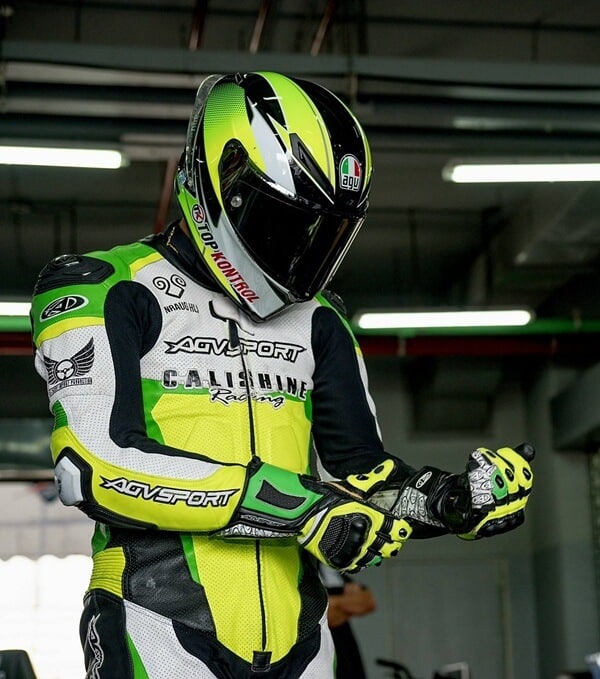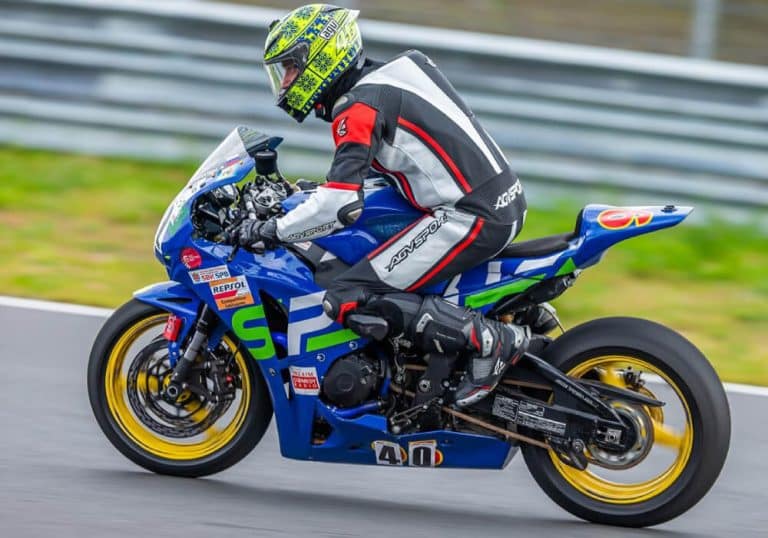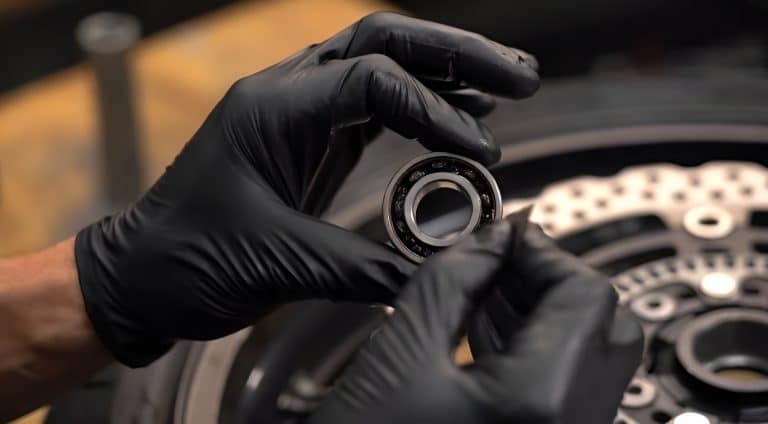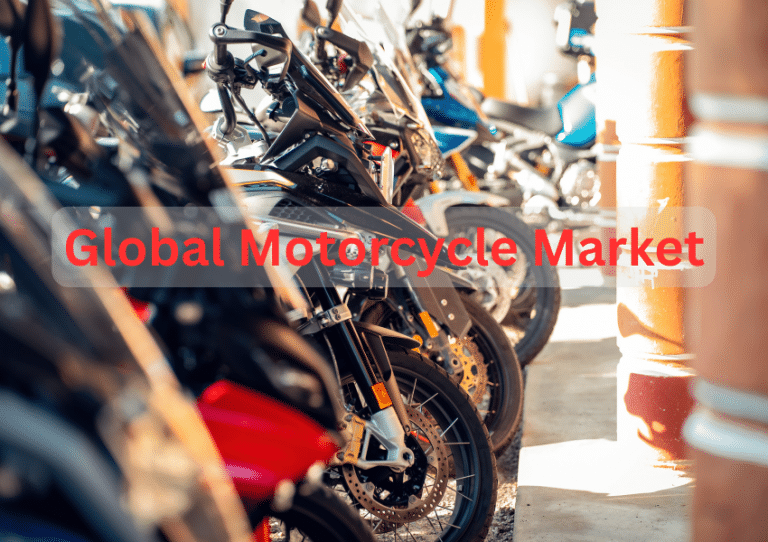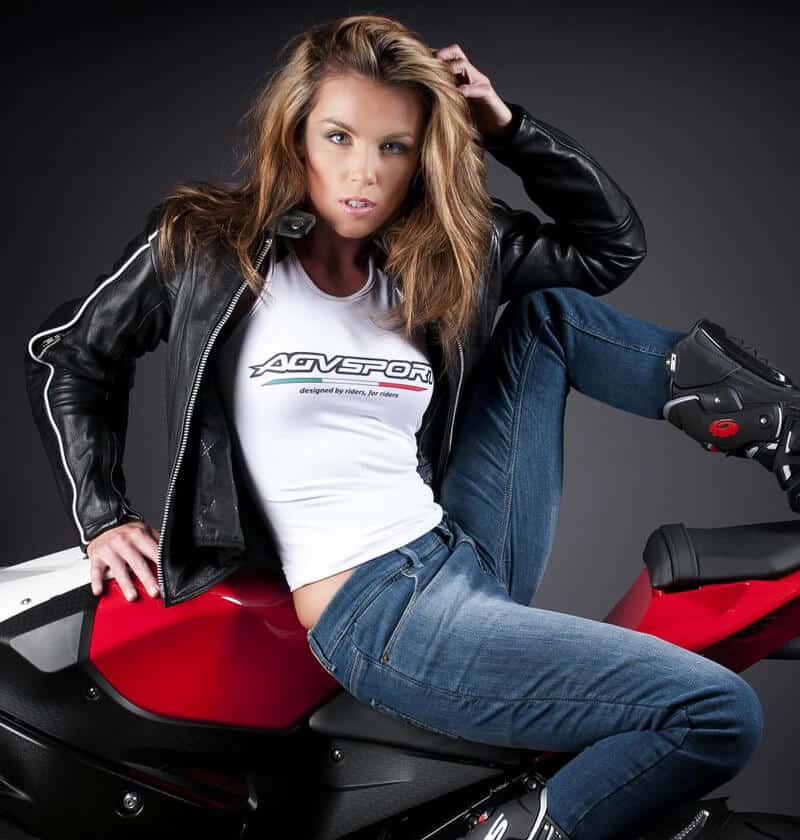Embracing the thrill of a motorcycle road trip can turn ordinary travel into an unforgettable adventure. Unlike traveling by car, bus, or train, a motorbike connects you directly with the landscape, making each journey uniquely memorable.
However, before you hit the road, it’s crucial to prepare adequately. The excitement of motorcycle touring comes with its own set of challenges. Here are over 10 essential tips to consider for a long motorcycle trip.
Best Tips For Motorcycle Road Trips

- Select The Right Bike Choosing the right motorcycle is crucial. It should handle long hours on the road, offer adequate luggage space, deliver good fuel efficiency, and be suitable for the terrain. Comfort is key, especially for long distances. Touring and bagger bikes are ideal for paved roads, whereas dirt bikes are better for off-road adventures.
- Plan Your Route In Advance Plan your route to maximize your experience of each location and attraction. While digital maps are useful, also carry a physical map in case of technology failures. Advance planning helps identify strategic stops for rest, meals, and fuel.
- Consider The Weather Motorcycle trips expose you to the elements. Prepare for all weather conditions by packing appropriate gear, including hand gloves and waterproof riding jackets. Ventilated gear is beneficial for warm weather, and carrying layers helps with cooler temperatures. Always be ready for changes in weather by carrying versatile clothing and accessories.
- Eat Light And Stay Hydrated Avoid heavy meals to maintain focus and energy. Since facilities may vary along your route, plan accordingly. Staying hydrated is essential, but balance your intake to minimize stops that could disrupt your trip.
- Keep Your Tools Handy Be prepared for unexpected issues like mechanical failures or flat tires. Carry a compact travel tool kit that includes wrenches, screwdrivers, chain lube, spare tubes, and essential engine components.
- Pack Wisely Space on a motorcycle is limited. Optimize your packing with high-quality, versatile luggage solutions like saddle bags, panniers, and dry bags. Essentials should include riding gear, clean clothes, chargers, and personal care items, especially if you’re not staying in hotels.
- Keep An Emergency Back-up Plan Ready Prepare for emergencies by planning alternate routes and identifying safe havens along your journey. Carry cash for places that may not accept digital payments.
- Take Frequent Breaks Long rides can lead to fatigue and discomfort. Regular breaks allow you to stretch, hydrate, and maintain energy levels, enhancing your overall experience.
- Keep Extra Fuel Handy Knowing your bike’s fuel range is crucial, especially in remote areas. Carry extra fuel to ensure you can reach the next refueling station without issues.
- Wear The Right Gear Safety is paramount. Invest in certified, high-quality riding gear including helmets, jackets, pants, and boots. Though it may feel cumbersome, this gear is essential for protection.
- Ride In A Group Group rides can enhance your experience by providing companionship and safety in numbers. Join bike clubs or group tours to connect with fellow enthusiasts.
Motorcycle trips are as much about the journey as the destination. Proper preparation ensures safety and enjoyment. Invest in quality gear and accessories to make your road trip more enjoyable and safe.
Follow these tips to plan an epic road trip on your motorcycle. For the best selection of gear and accessories, check out Recommended Gear: My Tried & Tested Picks
What Are The Pros And Cons Of A Naked Bike Style Motorcycle vs. an Adventure Touring Style Motorcycle?
Naked bikes and adventure touring motorcycles each offer distinct features suited to different types of riders and riding conditions. Here’s a breakdown of the pros and cons of each style:
Naked Bike Style Motorcycles

Pros:
- Lightweight and Maneuverable: Naked bikes typically have a lighter frame without the heavy fairings and additional gear found on touring bikes, making them easier to handle, especially in city traffic or on twisty roads.
- Style and Simplicity: These bikes are known for their minimalist design that highlights the bare essentials of the motorcycle. This not only looks sleek but also makes maintenance more accessible.
- Comfortable Riding Position: Naked bikes generally offer an upright riding position, which is comfortable for short to medium distances and reduces rider fatigue compared to more aggressive sport bike stances.
- Cost-Effective: Without the extra equipment of more specialized bikes, naked bikes are often less expensive to buy and maintain.
Cons:
- Limited Protection Against the Elements: The lack of fairings and windshields exposes riders to wind, rain, and road debris, which can be uncomfortable on longer rides.
- Less Suitable for Long-Distance Travel: While comfortable for shorter rides, the basic setup and lack of amenities can make long-distance touring less enjoyable.
- Limited Storage: Naked bikes typically do not come with built-in storage options like saddlebags or panniers, which can be a disadvantage for riders needing to carry items.
Adventure Touring Style Motorcycles

- Versatility: Adventure touring bikes are designed to handle a variety of terrains, from highways to dirt roads. This makes them ideal for riders who enjoy both on-road and off-road adventures.
- Comfort and Amenities: These bikes often come equipped with features like windshields, larger fuel tanks, and comfortable seating for long-distance rides. They also usually include options for mounting luggage and other gear.
- Advanced Technology: Adventure touring bikes frequently offer advanced riding technology such as adjustable suspension, traction control, and various riding modes to accommodate different environments.
- Protection: The design typically includes better protection against the elements, making them suitable for all-weather riding.
Cons:
- Weight: Adventure bikes are generally heavier than naked bikes, which can make them more challenging to handle in certain situations, especially for less experienced riders.
- Cost: With more features and capabilities, adventure touring motorcycles are often more expensive to purchase and maintain than naked bikes.
- Fuel Efficiency: Due to their larger size and additional gear, adventure touring bikes may not be as fuel-efficient as lighter, simpler motorcycles.
When choosing between a naked bike and an adventure touring motorcycle, consider your primary riding environment, comfort preferences, distance needs, and budget. Each style offers unique advantages that can significantly enhance your riding experience based on these factors.
When Planning A Motorcycle Trip Is It Better To Use An Accurate Local Paper Map Or Google Maps Online?
When planning a motorcycle trip, both paper maps and online maps like Google Maps have their advantages and drawbacks. The best choice often depends on your specific needs, preferences, and the nature of your trip. Here’s a comparison to help you decide:
Google Maps (Online Maps)
Pros:
- Up-to-date Information: Google Maps is regularly updated, offering the latest information on road closures, traffic conditions, and route changes, which is incredibly useful for avoiding unexpected delays.
- Interactive and Detailed: You can zoom in to see detailed features of the landscape, find specific addresses, and even view the area through street images in many places.
- Route Customization: Google Maps allows you to easily adjust your route by dragging and dropping the path across different roads and areas, and it provides multiple route options.
- Additional Features: It includes helpful travel data such as estimated arrival times, locations of gas stations, restaurants, and accommodations, and it can adjust routes in real time based on current traffic conditions.
Cons:
- Dependence on Technology: Requires a reliable internet connection to access the most useful features. Without cellular service, some functionalities like real-time traffic updates won’t be available.
- Battery and Hardware Reliability: Using your phone or GPS device for extended periods can drain the battery quickly, and there’s always a risk of hardware failure.

Local Paper Maps
Pros:
- Reliability: Paper maps don’t require a power source or internet connection, making them always accessible regardless of your location.
- Big Picture View: They offer a broad overview of the area, which can be helpful for understanding long routes and regional geography at a glance.
- Durability: They’re not susceptible to technical malfunctions and can be more durable under rough conditions, a typical scenario during adventure biking.
Cons:
- Less Detailed: While sufficient for general navigation, paper maps might not offer the detailed street-level data that digital maps provide.
- No Real-Time Updates: They can become outdated, as new roads are built and old ones are closed, and they don’t offer real-time traffic updates or route recalculations.
- Bulkiness: Carrying multiple paper maps can be cumbersome and may require additional space for storage.
Best Approach: Combination of Both
Many experienced riders recommend using a combination of both digital and paper maps:
- Primary Navigation: Use Google Maps for planning and real-time navigation due to its detailed and customizable routing.
- Backup Navigation: Carry a local paper map as a reliable backup for areas with poor cell service or in case of technology failures.
This combined approach ensures you’re well-prepared for various scenarios, from high-tech navigation aids to traditional map reading.
Is It Recommended To Carry A Compass On Your Motorcycle Adventure?
Yes, carrying a compass on your motorcycle adventure is highly recommended, especially if you plan to explore remote or less-traveled areas. Here are a few reasons why a compass can be a valuable addition to your gear:
Basic Navigation
- Reliability: A compass is a simple and reliable tool that doesn’t depend on batteries or network coverage. It can provide direction when electronic devices fail or are unavailable.
- Complement to Maps: When used alongside a map, a compass can help you orient yourself and ensure you are heading in the right direction, particularly in areas where landmarks are not clearly visible.
Safety
- Emergency Situations: In case of an emergency or if you get lost, a compass can be a crucial tool for finding your way to safety or to a predetermined location.
- Back-Up Navigation: Even if you primarily use GPS or a digital map for navigation, a compass serves as an excellent backup. It’s lightweight and easy to carry, making it a practical addition to your emergency kit.
Adventure Riding
- Off-Road Navigation: When venturing off-road, GPS devices may not be as reliable or detailed, especially in natural landscapes without clear roads. A compass can help you maintain your general bearing in such environments.
- Exploring New Areas: A compass allows you to venture confidently into new or uncharted areas, enhancing your exploration experience without the fear of getting completely lost.
Practicality
- Training and Skills Development: Learning to navigate with a compass and a map is a valuable skill that enhances your spatial awareness and ability to navigate under various conditions.
- Low-Tech Solution: For those who prefer a low-tech approach or wish to disconnect from digital devices, a compass offers a traditional and satisfying way to navigate.
Minimalist Approach
- Lightweight and Compact: Compasses are small and light, making them easy to pack and carry without adding significant weight or bulk to your gear.
In summary, a compass is a small, simple, and effective tool that provides critical navigation assistance, especially off the beaten path. Carrying one on your motorcycle adventure can significantly enhance your safety, confidence, and enjoyment of the trip.
What are The Best Pieces of Gear And Apparel To Cover All Types Of Weather, Temperatures, And Climates That May Occur During Your Motorcycle Trip?
When preparing for a motorcycle trip that may encounter varied weather conditions, temperatures, and climates, it’s crucial to select gear and apparel that offer versatility, protection, and comfort. Here’s a list of essential pieces of motorcycle gear and apparel designed to handle a range of conditions:
All-Season Motorcycle Jacket
- Features: Look for a jacket with removable thermal lining, waterproof layers, and ample ventilation options like zippered air vents.
- Materials: Textile materials like Gore-Tex offer excellent weather resistance and durability.
Convertible Riding Pants
- Features: Choose pants with removable waterproof and thermal liners, and vents for air circulation.
- Materials: Durable textiles reinforced with abrasion-resistant materials such as Kevlar or Cordura.
Multi-Layer Gloves
- Features: Waterproof gloves with a thermal liner are essential. Consider having two pairs: one for colder weather and a lighter pair for warm weather.
- Materials: Gloves should be made of breathable, waterproof material with reinforced palms and knuckle protection.
All-Weather Riding Boots
- Features: Waterproof boots with good ankle support are crucial. Look for boots with non-slip soles and enough flexibility for comfortable shifting and braking.
- Materials: Leather or advanced synthetics, with some including Gore-Tex for added waterproofing.
Modular Helmet with Pinlock
- Features: A modular helmet offers the versatility of a full-face helmet with the convenience of an open-face. The Pinlock system prevents the visor from fogging up.
- Materials: Polycarbonate or composite materials that offer durability and lightweight.
Base Layers
- Features: Moisture-wicking fabric to keep you dry and comfortable. Base layers for cold weather should also provide insulation.
- Materials: Merino wool or synthetic fabrics are preferred for their ability to regulate temperature and dry quickly.
Mid-Layers
- Features: Lightweight and easy to pack, mid-layers add insulation without bulk.
- Materials: Fleece or synthetic insulation materials that offer warmth even when damp.
Neck Gaiter or Balaclava
- Features: Protects the neck and face from cold wind and can be pulled up to cover the chin and mouth in colder conditions.
- Materials: Fleece, merino wool, or synthetic blends suitable for both warmth and breathability.
Waterproof Rain Suit
- Features: An easy-to-carry, quick-to-don rain suit can be worn over regular riding gear to provide an additional waterproof layer.
- Materials: Breathable, waterproof materials like nylon or polyester with waterproof coatings.
Heated Gear
- Features: For extremely cold environments, electrically heated gear such as vests, jackets, gloves, and even socks can be connected to your motorcycle’s battery for continuous warmth.
- Materials: Conductive materials with integrated heating elements.
Hydration Pack
- Features: For warmer climates or long rides, a hydration pack ensures easy access to water without needing to stop.
- Materials: Durable, lightweight materials with an insulated water reservoir.
Selecting the right combination of these items will help ensure that you are prepared for various weather conditions during your trip, improving your comfort and safety on the road.
What Are The Best Foods To Eat Before And During Your Long Motorcycle Adventure Trip?
Eating the right foods before and during a long motorcycle trip is crucial for maintaining energy, focus, and overall well-being. Here are some of the best foods to consider:
Foods to Eat Before Your Trip
- Complex Carbohydrates
- Examples: Oatmeal, whole grain breads, brown rice, and sweet potatoes.
- Benefits: These foods provide a steady release of energy over time, helping to avoid spikes and drops in blood sugar levels.
- Lean Proteins
- Examples: Chicken, turkey, fish, eggs, and tofu.
- Benefits: Protein is essential for maintaining muscle strength and endurance, which is important for long periods of riding.
- Healthy Fats
- Examples: Avocados, nuts, seeds, and olive oil.
- Benefits: Fats are a dense source of energy and help to keep you satiated longer, which can be useful on long rides where meals might be spaced out.
- Fruits and Vegetables
- Examples: Bananas, apples, berries, carrots, and leafy greens.
- Benefits: These provide essential vitamins, minerals, and antioxidants to support overall health and hydration.
Foods to Eat During Your Trip
- Snacks High in Energy and Easy to Digest
- Examples: Trail mix, energy bars, dried fruits, and granola bars.
- Benefits: These are easy to pack and eat on the go, providing quick energy and satisfying hunger without being too heavy.
- Hydration-Focused Foods
- Examples: Cucumbers, oranges, watermelon, and other fruits high in water content.
- Benefits: These help to maintain hydration levels, which is critical when exposed to the wind and sun for extended periods.
- Portable Protein Sources
- Examples: Jerky, nut butter, protein bars, and hard-boiled eggs.
- Benefits: These help sustain energy levels and muscle function, and they’re easy to consume during short breaks.
- Electrolyte-Rich Foods
- Examples: Coconut water, sports drinks, bananas, and salty snacks like pretzels or salted nuts.
- Benefits: They help replenish electrolytes lost through sweat, important for preventing cramps and maintaining fluid balance.
General Eating Tips for Long Motorcycle Trips
- Eat Small, Frequent Meals: Large meals can make you feel sluggish and drowsy. It’s better to eat smaller, more frequent meals to maintain a steady energy level.
- Stay Hydrated: Water is crucial, but don’t drink too much at once to avoid frequent stops. Hydration packs are a great way to sip water continuously while riding.
- Avoid Heavy, Greasy Foods: Foods high in fat and grease can make you feel lethargic and uncomfortable. Stick to lighter, simpler meals and snacks.
- Limit Caffeine: While it can help keep you alert, too much caffeine can lead to dehydration and jitteriness. Moderate your intake and balance it with plenty of water.
By planning your meals and snacks carefully, you can ensure that you have enough energy and focus for a safe and enjoyable motorcycle adventure.
What Are The Best Basic Essential Tools To Carry On Your Motorcycle Adventure Trip?
When embarking on a motorcycle adventure trip, carrying a well-thought-out toolkit is crucial for addressing mechanical issues that might arise along the way. Here’s a list of basic essential tools that should be part of your motorcycle kit:
1. Multi-Tool
- Features: A multi-tool includes various functions such as pliers, screwdrivers, and knife blades all in one compact device.
- Benefits: Saves space and weight in your pack while covering a range of functions.
2. Adjustable Wrench
- Features: An adjustable wrench can fit a variety of nut sizes, making it versatile for different tasks.
- Benefits: Reduces the need to carry multiple fixed-size wrenches.
3. Allen Key Set
- Features: Many motorcycle parts are fastened with Allen bolts.
- Benefits: An Allen key set (preferably a compact folding unit) covers all common sizes you might encounter.
4. Screwdrivers
- Features: Include both flathead and Phillips head screwdrivers.
- Benefits: Essential for handling various types of screws on your bike.
5. Socket Wrench Set
- Features: A basic set with the most common socket sizes.
- Benefits: Useful for quickly removing bolts and nuts, especially in hard-to-reach areas.
6. Tire Repair Kit
- Features: Should include tire levers, patches, adhesive, and a tube or a tire-plugging kit for tubeless tires.
- Benefits: Enables you to fix punctures or replace tubes to keep you rolling until you can get to a repair shop.
7. Portable Air Compressor or Hand Pump
- Features: Small, battery-operated or manual.
- Benefits: Allows you to inflate tires on the go, crucial after a repair or in case of pressure loss.
8. Spark Plug Socket
- Features: Specific to your bike’s spark plug size.
- Benefits: Necessary for changing spark plugs, which may be needed if you encounter engine issues.
9. Chain Breaker and Spare Links
- Features: For trips involving a lot of off-road riding.
- Benefits: Allows you to repair a broken chain, which could otherwise end your trip.
10. Duct Tape and Cable Ties
- Features: Versatile and can be used for temporary fixes on almost anything.
- Benefits: Ideal for quick, temporary repairs from loose components to cracked bodywork.
11. Flashlight or Headlamp
- Features: LED, rechargeable preferred.
- Benefits: Essential for making repairs or checking the bike in low-light conditions.
12. Oil and Fluids
- Features: Small bottles of engine oil, brake fluid, and chain lubricant.
- Benefits: Useful for top-ups and necessary maintenance while on long trips.
13. Jumper Cables
- Features: Compact motorcycle-specific jumper cables.
- Benefits: Allows you to start your motorcycle if the battery dies, or assist others in need.
Having these tools on hand will help ensure that you can address common mechanical issues independently, keeping your trip on track and minimizing delays. Always tailor your toolkit to the specific needs of your bike and the nature of your adventure.
What Type Of Bags, Carrying Cases, Or Luggage Is Recommended For a Short Motorcycle Trip vs a Long Motorcycle Adventure Ride?
Choosing the right bags, carrying cases, or luggage for your motorcycle trip depends greatly on the length and nature of your journey. Here’s how you can differentiate your choices based on whether you’re planning a short trip or a long adventure ride:
For Short Motorcycle Trips
For day trips or weekend outings where you don’t need to carry much, opt for compact and convenient options that don’t weigh down your bike unnecessarily.
1. Tank Bags
- Features: Sits on top of the fuel tank, usually attached via magnets or straps.
- Benefits: Easy to access while riding; perfect for storing items like maps, phones, snacks, and wallets.
2. Tail Bags
- Features: Mounted on the rear seat or tail section of the bike.
- Benefits: More space than tank bags without the need for side panniers; ideal for carrying extra layers, small tools, or other essentials.
3. Saddlebags
- Features: Drapes over or attaches beside the rear seat.
- Benefits: Good for balancing the load; suitable for slightly larger items without needing a full luggage setup.
For Long Motorcycle Adventure Rides
When you’re on the road for several days or weeks, you’ll need more comprehensive luggage solutions to accommodate extra clothing, camping gear, food, and emergency supplies.
1. Panniers
- Features: Hard or soft cases fixed on either side of the rear wheel.
- Benefits: Offers substantial space and is secure; hard panniers provide added protection against impacts and weather.
2. Top Cases
- Features: A hard box mounted at the back of the bike, behind the seat.
- Benefits: Secure storage for valuables and electronics; can double as a backrest for increased comfort on long rides.
3. Roll Bags
- Features: Waterproof bags that can be attached to the top case or directly to the rear seat.
- Benefits: Versatile and weather-resistant; great for storing clothes and gear that need to keep dry.
4. Duffel Bags
- Features: Soft bags that can be easily strapped down to a passenger seat or a luggage rack.
- Benefits: Flexible storage option; can be used for additional capacity when panniers and a top case aren’t enough.
General Considerations
- Waterproofing: Especially important for long trips where you may encounter varied weather conditions. Look for bags with built-in waterproof capabilities or those that come with rain covers.
- Security: Hard cases typically offer better security against theft and are more resistant to tampering than soft bags.
- Ease of Access: Consider how often you’ll need to access the contents of your bags. Tank and tail bags are easier to reach without getting off the bike, whereas panniers and top cases might require stopping and dismounting.
- Weight Distribution: Properly balancing your load is critical to maintaining good handling of the motorcycle. Distribute weight evenly and keep heavier items lower to the ground and as close to the center of the bike as possible.
By choosing the right type of luggage for your trip’s length and your specific needs, you can ensure a smoother and more enjoyable ride.
What Are Some Ideas For Being Prepared For Any Emergencies, Unexpected Mechanical Or Route Issues, And Other Unforeseen Problems?
Being prepared for emergencies, unexpected mechanical issues, and other unforeseen problems is crucial for a safe and successful motorcycle trip. Here are some strategies and items to consider packing to help you handle various challenges on the road:
1. Emergency Communication Tools
- Satellite Messenger or GPS Tracker: In areas without cell service, these devices can send distress signals and your location to emergency services.
- Fully Charged Cell Phone: Always carry a phone with emergency contacts programmed in, plus a portable charger or power bank.
- List of Emergency Contacts: Include local emergency services, nearby motorcycle repair shops, and contacts at your destination.
2. First Aid Kit
- Comprehensive Supplies: Your kit should include bandages, antiseptic wipes, gauze, tape, scissors, pain relievers, allergy medication, and any personal medications.
- Training: Knowing basic first aid procedures can be as important as having a kit. Consider taking a first aid course if you haven’t already.
3. Repair Kit and Tools
- Essential Tools: Include multi-tools, an adjustable wrench, screwdrivers, pliers, a tire repair kit, spare spark plugs, and a flashlight.
- Spare Parts: Carry essentials like fuses, bulbs, a spare clutch cable, and brake pads, which can help you manage common failures.
4. Navigation Aids
- Maps and Compass: Always carry a physical map and a compass as backups to digital GPS systems, which can fail or run out of battery.
- Pre-Plan Alternate Routes: Have plans for detours in case your primary route is blocked or unsafe.
5. Weather Protection
- All-Weather Gear: Pack rain gear, thermal wear, and sun protection to adjust to changing conditions.
- Waterproof Bags: Ensure your critical items are protected from the elements.
6. Food and Water
- Non-Perishable Snacks: Energy bars, nuts, and dried fruits are great for quick energy boosts.
- Hydration System: Carry a water bottle or hydration pack, especially in hot or dry areas.
7. Clothing and Personal Items
- Layered Clothing: Prepare for temperature changes with layered clothing options.
- Personal Hygiene Items: Include toiletries, sunscreen, and insect repellent.
8. Roadside Assistance and Insurance
- Membership in a Roadside Assistance Program: Services like AAA or similar organizations in your country can provide help if you’re stranded.
- Travel Insurance: Make sure it covers medical emergencies, trip cancellations, and motorcycle assistance.
9. Cash and Backup Credit Card
- Emergency Funds: Carry some cash and a backup credit card separate from your wallet in case you lose it or need funds for unexpected expenses.
10. Safety Training
- Motorcycle Safety Course: Brush up on your riding skills and learn advanced techniques for handling your bike in adverse conditions.
- Stay Informed: Check the weather and any route alerts daily during your trip.
By preparing comprehensively for emergencies and unexpected issues, you can enhance your safety and ensure that your motorcycle trip is enjoyable and stress-free, even when faced with challenges.
What Is The Ideal Break Schedule For A Long Motorcycle Trip?
For a long motorcycle trip, establishing a regular break schedule is essential for maintaining alertness and preventing fatigue, which is critical for rider safety. The ideal break schedule can vary based on individual endurance, the type of motorcycle, and road conditions, but here are some general guidelines to help you plan:
Break Frequency
- Every 1.5 to 2 hours: Take a break at least every 1.5 to 2 hours of riding. This frequency helps manage fatigue and keeps your concentration levels high.
- 15 to 20 minutes per break: Each break should last about 15 to 20 minutes. This is enough time to stretch, hydrate, use the restroom, and relax before continuing your journey.
Break Activities
- Stretching: Long periods of riding can cause stiffness and discomfort. Use breaks to do some light stretching, focusing on your arms, legs, back, and neck.
- Hydration: Always drink water during your breaks. Staying hydrated is crucial, as dehydration can lead to fatigue and decreased alertness.
- Snacking: Eat light snacks that are high in energy and easy to digest, such as fruits, nuts, or energy bars, to maintain your energy levels without feeling heavy or lethargic.
- Mental Rest: Give your mind a rest from the constant focus required for riding by simply relaxing for a few minutes without any specific activity.
Planning Break Locations
- Scenic Stops: Plan your breaks at scenic viewpoints or rest areas where you can enjoy the surroundings. This not only provides a rest but also enhances the overall experience of your trip.
- Fuel Stops: Coordinate some of your breaks with fuel stops to efficiently manage time. It’s practical to refuel the bike and yourself simultaneously.
- Sheltered Areas: If possible, choose places that offer some shelter from the weather, such as roadside cafes or park pavilions, especially important in extreme weather conditions.
Adjustments for Conditions
- Weather: In hot weather, you might need to take more frequent breaks to avoid heat exhaustion. Conversely, in cold weather, stopping for too long might cause your body temperature to drop, so keep breaks brief but frequent enough to stay warm.
- Road and Traffic Conditions: Difficult or stressful riding conditions, such as heavy traffic or poor road surfaces, might necessitate more frequent breaks due to increased physical and mental fatigue.
- Personal Endurance: Listen to your body. Some riders may need more frequent breaks, while others may prefer longer stints between stops. Adjust your break schedule based on how you feel during the trip.
By planning a break schedule that considers these factors, you ensure that you stay refreshed, focused, and safe throughout your motorcycle trip. Regular breaks not only contribute to safety but also make the journey more enjoyable.
What Is The Best Way To Carry Extra Fuel On Your Motorcycle?
Carrying extra fuel on a motorcycle trip is essential, especially if you’re traveling through remote areas where gas stations are sparse. Here are some of the best ways to safely and efficiently carry extra fuel:
1. Approved Fuel Containers
- Specialty Motorcycle Fuel Cans: Use containers specifically designed for motorcycles. These are typically robust, compact, and designed to handle the vibrations and conditions of motorcycle travel.
- Safety Certification: Ensure that any fuel container you use is certified for safety (e.g., by DOT, UN, or similar regulatory bodies). This ensures it’s built to withstand leaks and exposure to elements.
2. Mounting Options
- Hard-Mounted Solutions: Some riders prefer hard-mounted fuel cans that can be securely attached to the bike, often on the rear rack or side frames. This method is stable and keeps the weight distributed evenly.
- Soft Bags with Special Compartments: Specialized motorcycle luggage might come with compartments designed to safely carry fuel containers, providing a secure fit and protection from the elements.
3. Location and Balance
- Low and Centered: When mounting extra fuel, aim to keep it as low as possible and close to the center of gravity of your motorcycle. This helps maintain good handling and balance.
- Avoid Hanging Off the Sides: Extra fuel should not significantly alter the width or the handling dynamics of your bike, so avoid solutions that protrude too much on either side.
4. Capacity Considerations
- Size and Weight: Consider how much extra fuel you need based on your route and the availability of gas stations. Common sizes for extra fuel cans range from 1 liter to 5 liters. Larger tanks add more weight and can affect the motorcycle’s handling, so balance needs with practicality.
5. Materials
- Durable Materials: Opt for containers made from durable materials like high-density polyethylene or metal that can withstand impact and environmental exposure.
6. Safety and Handling
- Secure Attachment: Whatever method you choose, ensure that the fuel container is securely attached to the motorcycle. It should not shift or rattle, as this can affect handling or lead to spills.
- Regular Checks: Regularly inspect your fuel containers and their mounting points for any signs of wear, damage, or leakage.
- Easy Access and Use: Position the container so that it’s easy to remove and pour without the need to unload other gear or luggage.
7. Legal and Environmental Considerations
- Compliance with Laws: Check the local laws regarding the transport of fuel on highways or across borders, as there can be specific regulations.
- Environmental Responsibility: Always handle fuel with care to avoid spills, which are harmful to the environment and can be dangerous on the road.
By using the appropriate containers and mounting them securely, you can safely carry extra fuel on your motorcycle trip, extending your range and reducing the risk of running out of gas in inconvenient or potentially dangerous locations.
What Is The Ideal Motorcycle Apparel And Gear To Wear On A Day Motorcycle Trip Vs a Long Multi-day Adventure Trip?
Choosing the right motorcycle apparel and gear for the duration and nature of your trip is crucial for comfort and safety. Here’s a guide to help you decide what to wear on a day motorcycle trip versus a long multi-day adventure trip.
Day Motorcycle Trip
For shorter, day-long trips, comfort and convenience are key, but safety should not be compromised.
1. Helmet:
- Type: A full-face helmet is recommended for maximum protection.
- Features: Look for good ventilation and perhaps a sun visor for daytime riding.
2. Jacket:
- Material: A lightweight, breathable textile jacket with CE-rated armor in the shoulders, elbows, and back.
- Features: Waterproof capabilities for unexpected weather changes and ventilation zips for warmer conditions.
3. Gloves:
- Material: Light to medium-weight gloves that offer a balance between comfort, protection, and breathability.
- Features: Reinforced palms and knuckle protection.
4. Pants:
- Material: Abrasion-resistant riding pants or jeans with built-in or optional armor.
- Features: Comfort should be a priority for shorter trips, but never at the expense of safety.
5. Boots:
- Material: Durable, ankle-covering motorcycle boots.
- Features: Non-slip soles, waterproofing if possible, and good ankle support.
6. Eyewear:
- Type: If your helmet doesn’t have a visor, wear impact-resistant sunglasses or goggles to protect against wind and debris.
7. Hydration:
- Gear: Carry a hydration pack or water bottle, especially in warm weather, to stay hydrated during the trip.
Multi-Day Adventure Trip
For longer trips involving various terrains and weather conditions, gear should be versatile and durable.
1. Helmet:
- Type: An adventure or dual-sport helmet that can accommodate both street and off-road riding.
- Features: Sun visor, adequate ventilation, and a face shield that can handle both high speeds and dusty conditions.
2. Jacket:
- Material: A high-quality, all-weather adventure jacket with waterproof and breathable layers.
- Features: Multiple pockets, air vents for temperature regulation, and removable thermal liners.
3. Gloves:
- Material: Waterproof and thermal gloves for varying weather conditions.
- Features: Dual gloves system (a light pair for hot weather and a heavier, waterproof pair for cold/rainy conditions).
4. Pants:
- Material: Waterproof and breathable riding pants with thermal liners.
- Features: Pockets for convenience and zippers for ventilation.
5. Boots:
- Material: All-weather, sturdy adventure riding boots.
- Features: Waterproof, increased protection against impacts and abrasion, and comfort for long rides.
6. Base Layers:
- Material: Moisture-wicking materials for warm weather and thermal materials for cold conditions.
- Features: Quick-drying and comfortable against the skin.
7. Additional Gear:
- Items: Neck gaiter, balaclava, rain suit, and perhaps an extra set of gloves and socks.
- Purpose: Preparedness for changing weather conditions and maintaining comfort over long periods.
8. Luggage:
- Type: Durable luggage systems like panniers and a top case for carrying personal items, tools, and emergency kits.
- Features: Easy to detach and carry, waterproof and dustproof.
In both scenarios, all gear should meet safety standards and be comfortable enough to wear for extended periods. For longer trips, versatility and adaptability to different environments are key factors in your apparel and gear choices.
What Are The Pros And Cons Of Going On A Long Solo Motorcycle Ride vs Riding in a Group of Motorcyclists?
Going on a long motorcycle ride, whether solo or in a group, offers a unique set of experiences, each with its own advantages and challenges. Here’s a breakdown of the pros and cons of both solo and group motorcycle riding:
Solo Motorcycle Riding
Pros:
- Freedom and Flexibility: Solo riding allows you to set your own pace, make spontaneous decisions, and change your itinerary as you see fit without needing to consult or coordinate with others.
- Personal Growth: Traveling alone can be a profound, introspective experience, offering ample time for personal reflection and self-discovery.
- Simplicity in Planning: Organizing a trip can be simpler when you only have to accommodate your own preferences and schedule.
- Stronger Connection with Environment: Riding solo might lead to a deeper connection with the surroundings, as you may be more open to interacting with new people and places without the buffer of a group.
Cons:
- Safety Concerns: In case of an accident or mechanical failure, being alone can be a disadvantage, especially in remote areas.
- Loneliness: Long periods on the road without companions can become lonely, and there’s no one to share the experiences and challenges with.
- Increased Responsibility: All planning, decision-making, and problem-solving rest on your shoulders, which can be stressful.
Group Motorcycle Riding
Pros:
- Social Interaction: Riding with others can make the journey more enjoyable and memorable. You share the highs and lows, creating bonds and memories.
- Increased Safety: In a group, there’s mutual support available in case of emergencies, mechanical issues, or accidents. Someone is likely to have the skills or tools that you might lack.
- Shared Resources: Group riding allows you to share equipment, tools, and other resources, which can lighten your load and provide better preparedness for various situations.
- Learning Opportunity: Less experienced riders can learn from more seasoned riders. Riding techniques, routes, and motorcycle maintenance knowledge can be shared within the group.
Cons:
- Less Flexibility: Group travel requires coordination and compromise, which means sticking to a planned route and schedule that might not align with your personal preferences.
- Pace Conflicts: Keeping everyone together means riding at the pace of the slowest member, which can be frustrating if there are significant discrepancies in riding styles or speed preferences.
- Group Dynamics: Personalities might clash, or conflicts may arise, especially on longer trips where stress and fatigue set in.
Choosing Between Solo and Group Riding
The choice between solo and group riding ultimately depends on your personal preferences, riding style, and what you hope to get out of the trip. If independence and flexibility are your priorities, solo riding might be more suitable. If safety and social interaction are more important, you might enjoy group riding more.
Each style offers a unique way to experience the joys and challenges of motorcycle travel, and many riders find pleasure in both, depending on the circumstances and their mood.
M/M

